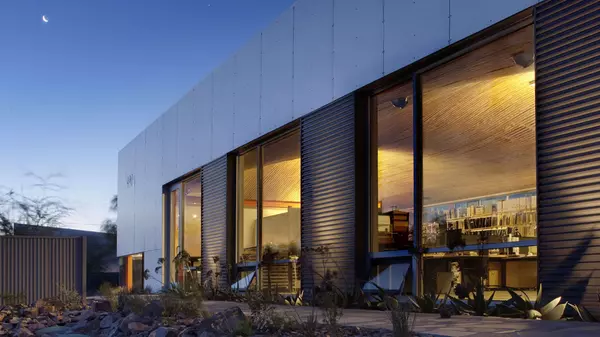What the 2025 Ontario Budget Could Mean for Kitchener Real Estate
The 2025 Ontario Budget (“A Plan to Protect Ontario”) has been announced, and promises to dedicate historic funding levels to accelerate municipal infrastructure that enables housing growth, including an extra $400 million for water and wastewater projects (HEWSF/MHIP) to support housing growth, and a $50 million modular‐housing fund to speed construction.
On the transit side, the Province reaffirmed its support for two-way, all-day GO service on the Kitchener line under Advancing GO 2.0, building on GO Expansion plans to electrify and increase frequencies on key segments of the line. Proximity to rail transit can boost property values tangibly, and Kitchener neighbourhoods around improved stations could similarly benefit from this access and other related residential and commercial development.
Additionally, the Budget includes $40 million in venture capital for life sciences and biomanufacturing, aligning with Kitchener’s “Make It Kitchener 2.0” strategy and positioning as an innovation capital. This funding could attract high-growth firms, driving demand for housing and commercial space near key employment hubs and supporting long-term property value growth.
Housing and Real Estate Investments in the 2025 Ontario Budget
Accelerating Municipal Infrastructure for Housing
Ontario is investing an additional $400 million to the Housing-Enabling Water Systems Fund (HEWSF) and the Municipal Housing Infrastructure Program (MHIP) to fast-track water, wastewater and stormwater upgrades.
- HEWSF: Nearly $1.3 billion supports 77 projects enabling 600,000 new homes by expanding drinking water and wastewater capacity.
- MHIP: $400 million across 60 municipalities will enable up to 160,000 new homes by funding roads and core servicing.
Modular Housing and Innovative Construction
To shorten build times and improve affordability, Ontario is committing $50 million over five years through Invest Ontario to expand industrial capacity for modular (factory-built) housing and related technologies.
Transit Investments Impacting Kitchener
Advancing GO 2.0 and Two-Way, All-Day Service
The 2025 Budget reaffirms the Province’s commitment to enhancing stations and rail corridors for two-way, all-day GO service on the Kitchener line under the Advancing GO 2.0 initiative. This builds on previous funding rounds and partnerships with municipalities to upgrade tracks, signalling and station platforms.
GO Expansion and Kitchener Line Improvements
Ontario’s broader GO Expansion framework allocates roughly $61 billion over ten years to public transit capital, heavily weighted toward projects already in design or construction. Specifically impacting the Kitchener line is electrification and infrastructure work to enable two-way, all-day service between Bramalea and Union Station at 15-minute frequencies, and planned 30-minute bi-directional service between Mount Pleasant and Union Station, with peak-period upgrades to 15-minute service.
Property-Value Uplifts Near Stations
Research generally shows that proximity to rail transit can increase property values; properties within about one kilometre of a station often experience value uplifts, though percentages vary by location and context. For Kitchener, improved GO stations could similarly boost residential and commercial demand due to better accessibility and reduced commute times. Exact impacts depend on local market conditions and transit improvements, however.
Catalyzing Transit-Oriented Development (TOD)
New transit infrastructure often requires land assembly but ultimately spurs surrounding development, from mixed-use projects to higher-density residential complexes. In Kitchener, areas around Freeman, Guelph and Mount Hope stations are poised for similar TOD, with potential municipal incentives to encourage affordable and mid-rise housing.
Support for Life Sciences and Biomanufacturing: A Boost for Kitchener’s Innovation Economy
The 2025 Ontario Budget also sets aside $90 million in new venture capital funding through Venture Ontario, with $40 million explicitly dedicated to life sciences and biomanufacturing innovation. This initiative has the potential to deliver outsized benefits to Kitchener, which has been actively positioning itself as a key player in the province’s innovation corridor. The funding aligns directly with the city’s “Make It Kitchener 2.0” economic development strategy, which prioritizes investment in advanced manufacturing, biotech, and medtech sectors. With a strong base of research institutions, accelerators, and growing companies in adjacent fields, Kitchener is well-placed to attract and retain high-growth ventures supported by this infusion of capital.
Life sciences and biomanufacturing industries tend to generate stable, high-paying jobs, which can fuel demand for both residential and commercial space. If new companies scale or relocate to take advantage of Ontario’s targeted funding, demand for lab facilities, mixed-use developments, and executive housing may rise, particularly in districts like the Innovation District or Huron Business Park. Over time, this could contribute to upward pressure on property values in areas near Kitchener’s employment clusters and transit infrastructure, reinforcing the city’s long-term growth trajectory.
Long-Term Growth Prospects for Kitchener
The 2025 Ontario Budget could significantly impact Kitchener by accelerating housing delivery through $400 million in infrastructure funding and $50 million for modular construction. Expanded GO service will strengthen commuter connectivity, while $40 million in life sciences and biomanufacturing investment aligns with Kitchener’s innovation strategy, potentially boosting demand for housing and commercial space. Collectively, these measures support long-term real estate growth across residential, transit-linked, and employment districts.
Recent Posts










